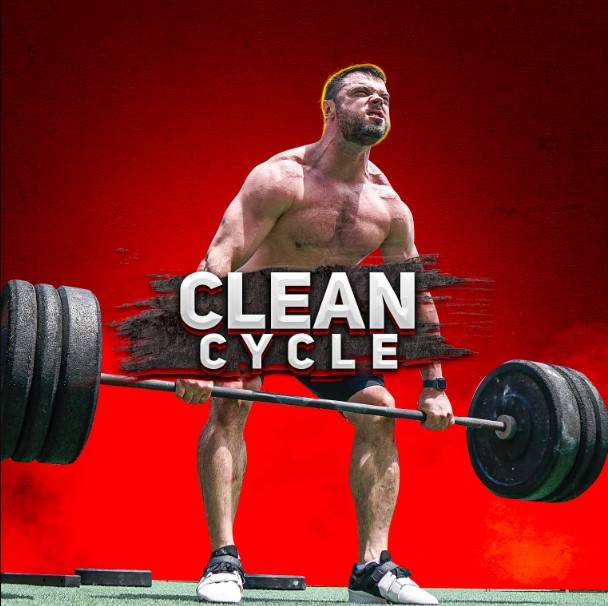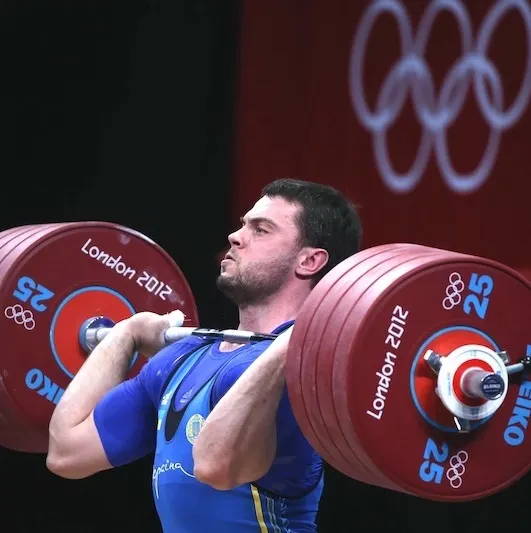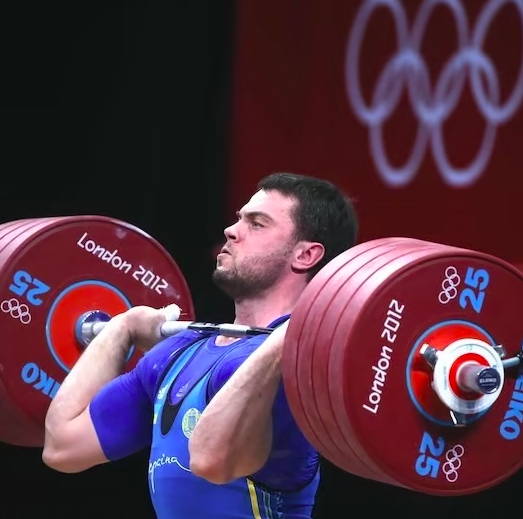The clean grip is one of the basic techniques in Olympic weightlifting and it plays a big part when it comes to form, safety, and performance. And while some people might mistake this for just where your hands are on the bar, there’s more to it.
The point is creating a strong connection between your body and the weight, so that you can get the power you need for explosive movements. But we don’t expect you to just blindly believe what we say, so grab a bar and get ready to learn why the clean grip is such a big deal!
What is the clean grip? – It’s a hand placement used in Olympic lifting, especially in the clean and jerk. You grip a bar slightly wider than shoulder-width, with the palms facing down. This type of grip allows you to have better control, and more stability and power during the lift.

Clean Grip – Why It’s So Crucial for Clean?
Having a strong grip is important, of course. But, it’s also extremely important to know how to place your hands in order to get the most out of it (and this part sometimes gets overlooked).
When you do it the right way, a good power clean hand position will give you stability, control, and power, and because of that, you’ll be able to lift heavier weights in a safer, more efficient way.
Basically, if you’re serious about Olympic lifting, you need to understand the clean grip completely.
Hook Grip vs Overhand Grip
One of the first things you’ll need to decide on when you’re setting up for a clean is whether you’ll use a hook grip or an overhand grip.
The hook grip (where you wrap your thumb under your fingers) is usually something you’ll see experienced lifters use because it gives a more secure hold on the bar, especially under those super heavy weights and it’s considered the norm, especially for the power clean.
This grip will make the bar less likely to slip out of your hands during the explosive phase of the clean, which is important for control, and if you’re doing a power clean, a hook grip will improve the timing of the turnover and catch.

The overhand grip, however, is more straightforward and you simply wrap your fingers over the bar with the thumbs on top. It’s easier to set up and it’s more comfortable for beginners, but you don’t get the same amount of security as you do with the hook grip, especially when you’re working with heavy weights.
If you want to progress, you’ll need to go from the overhand grip to hook grip early on because it can make all the difference when it comes to performance and safety.
Hook grip can help you eliminate a lot of beginner mistakes like incorrect elbow position, slow turnover and even early arm bend. It can be a bit painful in the beginning (to your thumb) but it takes about 2 weeks to adapt to it and it will be much better. You can also use tapes to wrap your thumb which you can see very often with elite lifters.
Clean Grip Width – What Will It Determine?
The clean grip width affects your performance. Generally, the clean grip is a little wider than shoulder-width apart, but there’s no set width because it varies based on a person’s body proportions and what they feel is comfortable. A proper clean grip width affects a lot of aspects of the lift, including your bar path, how much power you’re able to generate, and balance.
If your power clean grip width is too narrow, you won’t be able to generate enough power from your legs and hips, so the lift won’t be as effective as it should be. It can also throw the bar path off and make it swing too far from your body, which is another thing that will make the lift less effective. It will also increase the risk of injury.
On the other hand, a grip that’s too wide will make starting position more difficult and affect your point of contact and even how much you can pull from the ground.

1. Point of Contact
This is where the bar makes contact with your body during the clean. This happens around the upper thighs or hips, depending on the width of your grip. The point of contact is super important because it’s your power position – where you’ll generate the explosive power you need to propel the bar up.
A grip that’s too narrow will make the point of contact too low on your thighs, which will result in a weaker lift and an inefficient bar path. A wider grip will shift the point of contact higher, but starting position and first pull might be harder.
You want a clean grip that will allow the bar to hit at a point where you can get maximum power transfer from your legs and hips to the bar but also one that will be most efficient in a first pull.

2. Front Rack Position
This is where you catch the bar after the explosive pull in the clean. Your clean grip directly influences how comfortable and stable this position feels. Ideally, when you catch the bar, your elbows should be high, and the bar should rest securely on your shoulders.
If your grip is too wide, it will be hard to get this position, so you’ll be uncomfortable and you’ll get an unstable rack. The instability might make you lose control of the bar.
A grip that’s too narrow could force your elbows down and won’t allow the bar to properly rest on your shoulders.
How to Setup Clean Grip?
Place your hands on the bar a bit wider than shoulder-width apart. I personally like to set up new athlete grip width with a thumb-length away from their thighs when they stand up with arms on a side. You should feel a natural tension in your upper back as you grip the bar.
If you’re using a hook grip, wrap your thumb around the bar and then cover it with your middle and then index finger. If you’re using an overhand grip, just wrap your fingers over the bar with your thumbs on top.

Follow us!

FREE

FREE
Get a 2-week Weightlifting Program as a bonus for the subscription to kickstart your training plan!
Clean Grip Mistakes & How to Avoid Them

Crush Your CLEAN PR in 5 Weeks! 🏋️
Achieve:
🏅New CLEAN Records.
💪Master CLEAN variations.
🏋️♂️Focus on back and leg strength.
🎯Specific skills and drills for your CLEAN.
Highlights:
📆 5 Days / Week
✅ Varied Lifts
💪 Strength & Technique
🔥 Healthy Warm-Ups
Elevate your CLEAN game today! 💥
Conclusion
References:
- Dustin J. Oranchuk, Eric T. Harbour, Riki S. Lindsay, Adam G. Storey, and Eric J. Drinkwater, “Improved Power Clean Performance with the Hook-Grip is Not Due to Altered Force-Time or Horizontal Bar-Path Characteristics,” Journal of Sports Sciences 40, no. 2 (2022): 226-235.
- Dustin J. Oranchuk, Eric J. Drinkwater, Riki S. Lindsay, Eric R. Helms, Eric T. Harbour, and Adam G. Storey, “Improvement of Kinetic, Kinematic, and Qualitative Performance Variables of the Power Clean With the Hook Grip,” International Journal of Sports Physiology and Performance 14, no. 3 (2019): 378-384.
- Kinetic Select, “Power Clean,” National Strength and Conditioning Association, https://www.nsca.com/education/articles/kinetic-select/power-clean/ (accessed August 14th, 2024)
- Raju Vaishya, Anoop Misra, Abhishek Vaish, Nicola Ursino, and Riccardo D’Ambrosi, “Hand Grip Strength as a Proposed New Vital Sign of Health: A Narrative Review of Evidences,” Journal of Health, Population and Nutrition 43, Article 7 (2024).
- Thomas Huyghe, Brent Goriss, Ernest DeLosAngeles, and Stephen P. Bird, “Exploring the Power Clean,” International Journal of Strength and Conditioning 1, no. 1 (2021).
- Photos by Torokhtiy Media Team.
Why Trust Us?
The product testing process is described in more detail here.
Experience: 21 years
Best Results: Snatch – 200 kg,
C&J - 240 kg
My name is Oleksiy Torokhtiy. I am a professional athlete with 20 years of experience in Olympic weightlifting. I have won multiple European, and World titles and have taken part in two Olympic Games (Beijing 2008, London 2012).
After finishing my career, I have committed myself to coach, and as of 2022, I’ve hosted 200+ weightlifting seminars all over the globe. I’m the founder of an international sportswear and accessories brand, Warm Body Cold Mind (my motto), author, and creator of a series of training programs and eBooks.
If you have any questions/suggestions/any other inquiry, you can reach out to us via email - reviews@torokhtiy.com




